The History
of the Earth in 90 Minutes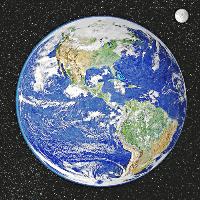
From
Gas Cloud to Cinder
Michael Bleiweiss
Presented to the Ethical Society of Boston
16 April 2017
Posted 25 May 2019
Opening Words
These are samples of birthday cards I gave my father to make fun
of his age:
When you were a kid, the Dead Sea was just a little bit sick.
When you were a kid, Alexander the Great was just mediocre.
Don't worry about someone finding your birth certificate and
discovering your real age.
Not that many people can read Hieroglyphics anymore.
[picture of the Dead Sea Scrolls] Good news, they found your
birth certificate.
Do you know that Salem, MA was once a swamp where dinosaurs
roamed freely?
How could you - you were just a kid then.
[picture of birds] Here is a picture of some modern day
dinosaurs to remind you of your childhood.
Abstract
The earth has existed for 4˝ billion years and it's been a very
busy planet. Continents have formed and broken up and formed
again. Millions of species of living things have come and gone. Eventually, one species capable of understanding this history
evolved. This presentation explores our knowledge of this
history.
Michael Bleiweiss is a physicist, engineer, and computer
professional who has been interested in astronomy, paleontology,
and evolutionary biology since childhood. His favorite places to
go were the dinosaur halls and the planetarium in the New York
Museum of Natural History.
Introduction:
This talk is a brief history of the earth. It is based on three centuries of research and
understanding in astronomy, geology, paleontology, and biology. Pictures of extinct species are artistic renderings based on
carful reconstruction of fossils. It goes without saying that
their colors are purely conjectural.
Formation of the Earth
About 4˝ billion years ago, somewhere in the Milky Way galaxy,
there was an area with a higher concentration of gas and dust
than the general extreme vacuum of space, known as a diffuse
nebula. Some force, either the shock wave from a nearby
supernova (an exploding massive star) or the random motion of
the materials in the cloud, caused local areas of increasing
concentrations of material to accumulate. This launched a
positive feedback loop of accelerating concentration due to the
attraction of gravity, which, after about 1 million years, led
to the formation of bodies massive enough to start the fusion of
hydrogen into helium in their cores and become stars. An example
of this in the present day, the Orion Nebula, is shown in
Figures 1 and 2.
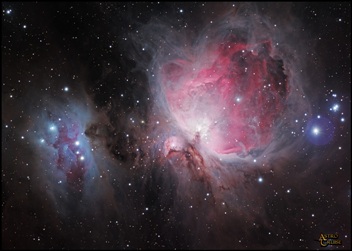
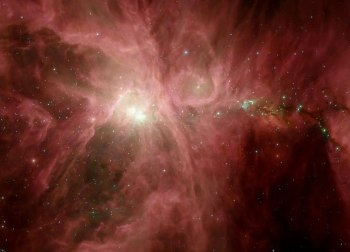
Figure 1. Orion Nebula.
Figure 2. Orion Nebula -- star forming region.
One of these new stars was our sun. As the sun formed, material
left over and rotating around it formed a disk, called an
accretion disk. A recent image of one from the star HL Tau in
the constellation Taurus is shown in Figure 3. Over the next few
million years, the gravity from areas of higher density within
this disk "swept up" the material surrounding them to form the 8
major planets plus millions of smaller bodies - dwarf planets,
asteroids, and comets.
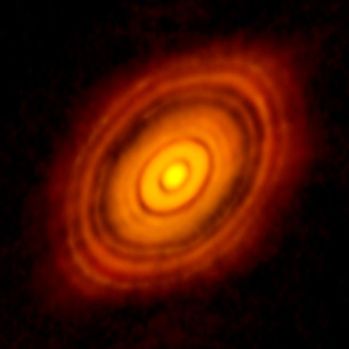
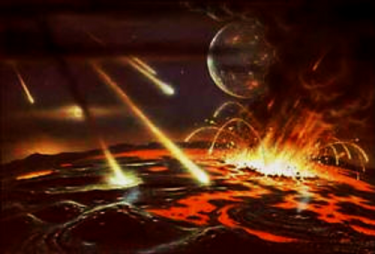
Figure 3. HL Tau Protoplanetary Disk.
Figure 4. Late Heavy Bombardment.
The 3rd of these planets out from the sun was the earth. The
earth is classified as a small rocky planet with a diameter of
7,926 miles. A still unsettled theory, called the "late heavy
bombardment," posits that the early earth was disrupted by large
numbers of asteroids and comets that crashed into the earth
between 4.1 to 3.8 billion years ago (no non-meteoric rocks
earlier than this have been found). An artist's conception of
this is shown in Figure 4. It is possible that one of these
collisions spawned off the moon. This period of early formation
is called the Hadean Period.
After this the earth stabilized. The lightest minerals slowly
rose to the surface, forming the crust, which cooled and
solidified. Continued volcanism released large quantities of
gases and water vapor into the atmosphere. As the planet cooled,
the water vapor was released from the atmosphere and fell to the
ground as rain -- possibly over several million years - forming
the earliest oceans. This period of stabilization is called the Archean Period.
It should be mentioned here that the early earth spun much
faster than it does today. A day was only about four hours long. Over the past four billion years, the friction from tidal forces
created by the moon has slowed down its rotation to the 24 hour
day we have now. Since angular (rotational) momentum has to be
conserved, the lost spin of the earth has been transferred to
the moon, pushing its orbit further and further away.
Beginning of Life
The earliest life formed either before or just after the LHB. It
is unknown where. It could have been in undersea hydrothermal
vents, in shallow tidal pools blasted by lightning, or brought
by comets. Either way, the first organisms were likely very
primitive bacteria of the kingdom Archea called cyanobacteria or
blue-green algae. The very earliest fossils are of these
organisms and are found as rock formations called stromatolites. These date from about 3.5 billion years ago and are shown in
Figure 5. Where this fits into the earth's timeline is shown in
Figure 6.
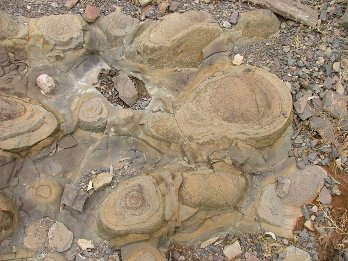
Figure 5. Stromatolite Fossils.
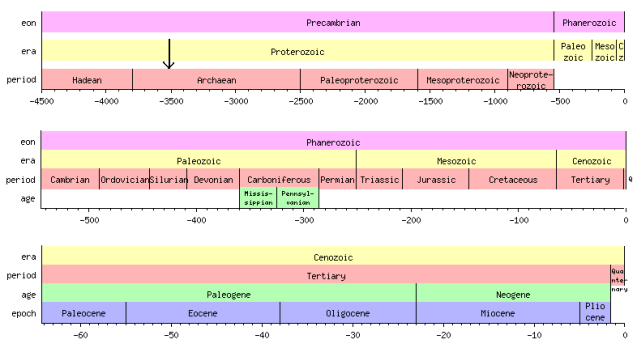
Figure 6. Geologic Timeline -- Archean Period.
The early earth's atmosphere did not contain free oxygen. Rather, it was a mixture of nitrogen, carbon dioxide (CO2),
methane (CH4) and ammonia (NH3). Cyanobacteria developed the
ability to perform photosynthesis - the conversion of water and
CO2 into sugar using sunlight and producing oxygen as a
byproduct. This created the first major pollution event -
depleting CO2 and filling the water and atmosphere with free
oxygen (O2). Initially, this oxygen reacted with dissolved iron
in the water that precipitated out as rust, creating a layer of
iron ore hundreds of feet thick. Once this iron was consumed,
the oxygen dissolved into the water and escaped into the
atmosphere.
This then permitted the evolution around two billion years ago
of regular bacteria (prokaryotic) and eukaryotic (containing a nucleus and
organelles) single celled organisms, some of which became the
first predators. Some scientists theorize that mitochondria were
originally bacteria that were ingested by eukaryotic cells based
on the fact that they have their own, separate DNA. It also
included algae, whose photosynthesis would have accelerated the
oxygen pollution even more. Where this fits into earth's timeline is
shown in Figure 7.
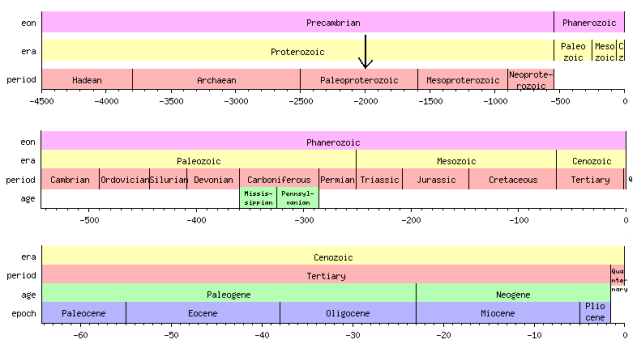
Figure 7. Geologic Timeline -- Eukaryotic Cells.
From about 750 to 600 million years ago (MYA), the world was in
the grip of a massive ice age (sometimes called "snowball
earth") caused by early life's depletion of the greenhouse
gasses CO2 and methane, which caused the atmosphere to become
transparent and radiate away heat. When the planet finally
warmed again, possibly from new CO2 released by volcanoes, the
melting ice released massive quantities of minerals into the
sea, enabling the formation of multi-cellular organisms.
Multi-Cellular Life
The earliest animals appeared from about 630 to 540 MYA and are
known as the Vendian fauna (after a rock formation in Russia). They were all soft-bodied and known by the impressions they left
behind, rather than actual fossils. Where this fits into earth's
timeline is shown in Figure 8. Renderings of them are shown in
Figure 9. Many of our modern phyla developed at this time,
including sponges, jellyfish, mollusks, and echinoderms
(starfish). These animals exhibited no means of locomotion and
were most likely stationary - either lying or anchored on the
bottom of the ocean.
Toward the end of this period, there is evidence of more
complex, mobile, and predatory organisms, possibly worms and
mollusks, that would have preyed on the defenseless Vendian
fauna, which mostly became extinct. A very recently discovered
such creature is the grain of rice sized Saccorhytus (wrinkled
bag) - a possible ancestor to modern echinoderms and vertebrates
(Figure 10).
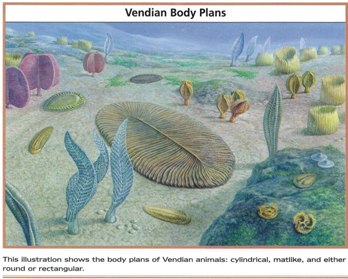
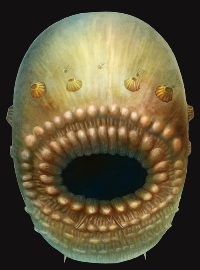
Figure 9. Vendian Fauna.
Figure 10. Saccorhytus Coronarius.
The entire history of the earth up to this time is designated
the Precambrian Era. With the appearance of animals that can
leave actual fossils, we enter the Paleozoic Era.
As the earth continued to warm and the glaciers above melted,
large areas became covered with shallow seas laden with
dissolved minerals, allowing the first animals with hard shells
to appear at the beginning of the early Cambrian Period - about
545 MYA -- marking the start of the arms race between predator
and prey that continues to this day. These were still very small
- only about 5mm - and are known as the "small shelly faunas."
The Cambrian period in the timeline is shown in Figure 11. I
point out here that each row is 10 times as detailed as the one
above. It should also be noted now that the surface of the earth
is not static. Rather, the land masses migrate due to convection
in the earth's mantle causing hot spots where lava wells up,
causing volcanic rifts and spreading. On the opposite side,
continents collide together. This is diagrammed in Figure 12. This migration is called
plate tectonics or continental drift. The land masses of the early Cambrian are shown in Figure 13.
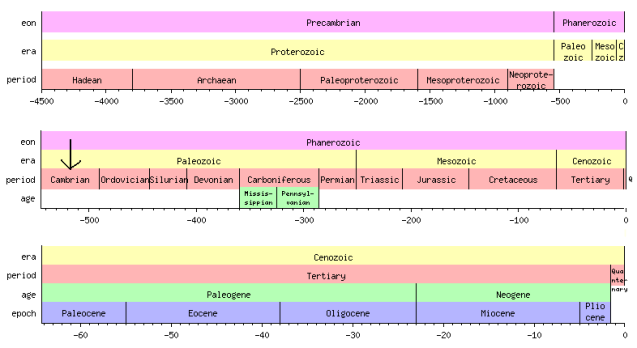
Figure 11. Cambrian Period.
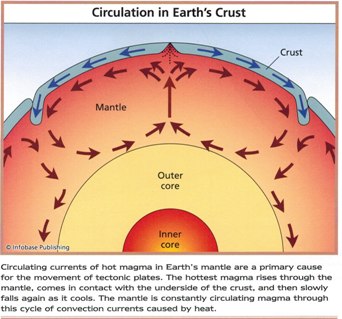
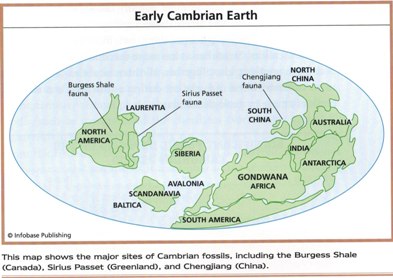
Figure 12. Mantle Circulation Inside the Earth.
Figure 13. Cambrian Period Continents.
The Middle Cambrian period - about 525 MYA -- saw the "Cambrian
Explosion" - the sudden rapid evolution of new species. It
included the ancestors of almost all of the 23 living phyla plus
many that later became extinct. The major groups evolved during
this time include various worms, mollusks, brachiopods,
arthropods, echinoderms (star fish), and pre-chordates
(ancestors to the vertebrates). Most of these animals were still
pretty small - most only a few inches long. The largest, a
pre-arthropod predator called Anomalocaris (Figure 14), was 2 feet
long. The bottom-dwelling arthropod, the trilobite (Figure
15), also appeared at this time. The dominant plants
during this period were various forms of algae, many of them
multi-cellular.

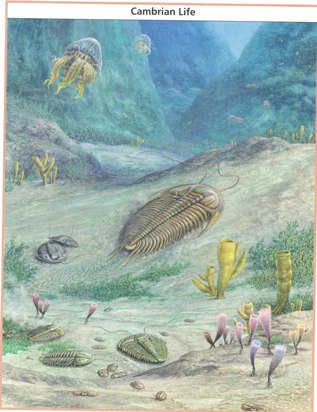
Figures 14 & 15. Middle Cambrian Fauna.
The First Vertebrates
Amid this explosion of diversity of Cambrian invertebrates, the
earliest chordates were also quietly evolving. These were
members of the subphylum Cephalochordata. They had the basic
elongated body plan, dorsal notochord (a cartilage rod running
the length of the body), striated muscles, and an internal skeleton made
of cartilage, rather than bone. A contemporary example of this
group is the lancelet, a small fish-like creature shown in
Figure 16.
The first true vertebrates appeared 525 MYA. These were the
jawless fishes or agnathans. The earliest known species was
Myllokunmingia, which was about 1 inch long and is shown in
Figure 17. These fish would feed by scooping debris off of the
sea floor or by ingesting prey as they swam.
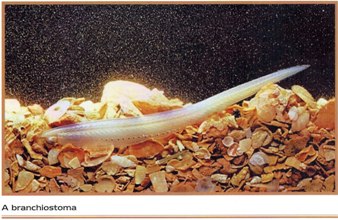
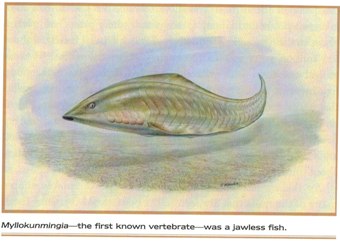
Figure 16. Early Chordate -- the Lancelet
Figure 17. Jawless Fish -- Myllokunmingia
Ordovician and Silurian Periods
At the end of the Cambrian Period 485 MYA, the first great
extinction occurred, eliminating 42% of all animal species and
marking the start of the Ordovician Period. It was most likely
due to a combination of continental drift changing climates,
large scale volcanic eruptions, and multiple rapid shifts in sea
level. Figure 18 marks this point in time.

Figure 18. Ordovician Period.
The Ordovician Period saw higher sea levels with a greatly
increased variety of environments and new species rapidly filled
these new niches. These included corals, cephalopod mollusks
(including the shelled nautiloids), bottom-dwelling crinoids (a
group of echinoderms), moss-like bryozoans, snails, and clams. The nautiloids were the top predators of this era. These are
shown in Figure 19.
The jawless fishes continued their development as well, growing
bony armor plating and scales. They were still rather small, the
largest being about 8 inches long. They lacked fins and were
clumsy swimmers. They would still have been detritus feeders. Examples include
Astraspida and Arandaspida, which are shown in
Figure 20.
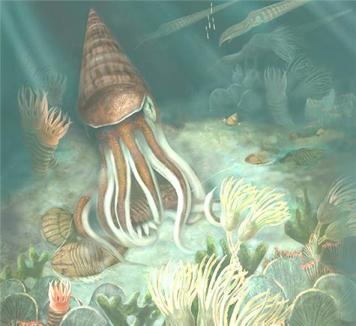
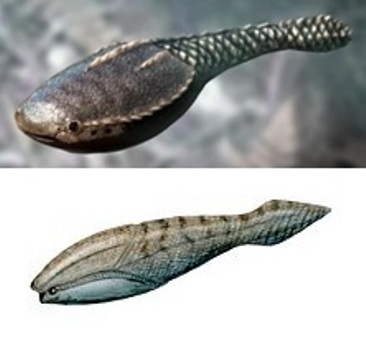
Figure 19. Ordovician Scene.
Figures 20. Jawless Fishes -- Astraspida &
Arandaspida
A second great extinction marked the boundary between the
Ordovician and Silurian Periods 440 MYA. This was most likely
due to major global cooling precipitated by massive glaciation
in the southern part of the Gondwana supercontinent as it
migrated over the south pole. 85% of all animal species,
encompassing over 100 families were wiped out. Figure 21 marks
this event.
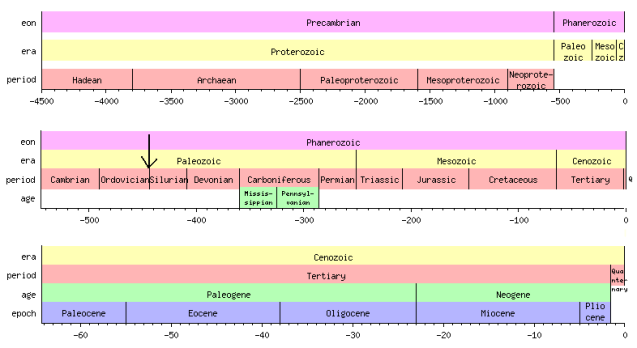
Figure 21. Silurian Period.
In the Silurian period, the jawless fishes thrived, expanding to
hundreds of species in a wide array of shapes. They grew in size
-- some up to 3 feet in length -- and continued to evolve more
"advanced" features, such as fins and bony skeletons instead of
cartilage.
In the late Silurian period, some 420 MYA, fish started to form
jaws (out of the forward gill arches) and teeth (out of scales). This radically increased the range of food they could eat
(including other fish), allowing them to grow in size, become
much more active, and move into diverse habitats. This, in turn,
"prompted" the evolution of additional features to enhance
swimming ability -- losing the bony plates and adding fins and
the swim bladder. All of this allowed fish to rise to the top of
the food chain. It also rendered the jawless fishes all but
extinct. The only jawless fishes still living today are the
lampreys and hagfish. These developments continued into the
Devonian Period, which ended some 360 MYA. The largest and most
formidable species from the late Devonian was Dunkleosteus,
which grew to 30 feet long. It is shown, along with a sampling
of jawless fishes in Figure 22.
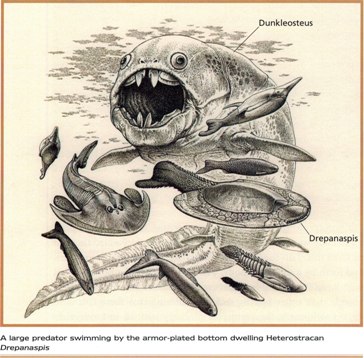
Figure 22. Dunkleosteus & Various Jawless Fishes.
The two main lines of modern fishes - the sharks with cartilage
skeletons (Chondrichthyes) and bony fish (Osteichthyes) split
from a common ancestor during the late Silurian period about 400
MYA. The bony fishes also split into two lines - the ray finned
and the lobe finned. Their likely common ancestor was a fish named
Psarolepis. The ray finned fishes slowly became the dominant
group and remain so to the present and are the most abundant
vertebrate class today. The lobe fins' numbers gradually
diminished. The only living species are the coelacanth and lung
fishes. However, they were the ancestors to the land
vertebrates, as will be described below.
The third great extinction took place in the late Devonian
period (about 350 MYA) as Gondwanaland drifted back over the
south pole, causing another period of glaciation and cooling
that killed 70% of all invertebrates plus many of the jawless
fishes. This point in time is shown in Figure 23.
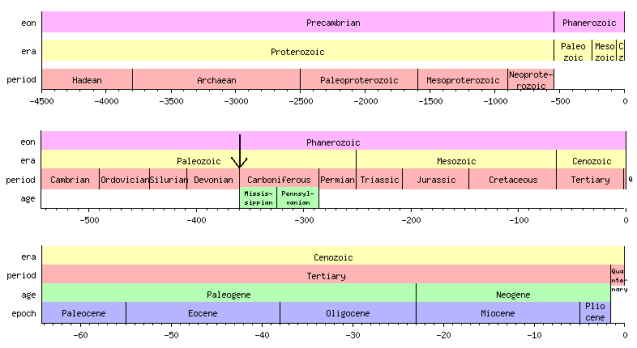
Figure 23. Late Devonian Period.
Early Land-Based Life - Plants
The very first colonists on land were algae that were thrown up
by waves or stranded by receding tides in the early Paleozoic
era around 600 MYA. Some combined with fungi to form lichens
beginning in the Cambrian period 550 MYA. Photosynthesis from
these organisms consumed CO2 (reducing it by a factor of 10) and
released oxygen (air pollution), mostly between 410 and 370 MYA. By the late Cambrian, this increased oxygen permitted the
formation of the ozone layer that protects terrestrial life from
the sun's ultraviolet radiation.
It took another 100 MY until these organisms were able to form
organic soils that could support multi-cellular plants. The
earliest of these were the non-vascular liverworts, hornworts,
and mosses, that first appeared in the middle Ordovician 460 MYA. The seedless vascular plants -- such as ferns, club mosses, and
horsetails -- first appeared in the early Silurian 440 MYA. Over
the next 100 MY, these plants evolved and spread to form the
giant forests and swamps of the Carboniferous period (so called
because it was the swamps from this period that created coal
deposits) .
The first plants producing true seeds were the gymnosperms
(modern examples include the cycads and conifers), which
appeared during the Permian period 270 MYA. These
plants were able to live in the cooler, dryer climates further
inland and at higher elevations. An example from the
Carboniferous period is Telanglum (Figure 24).
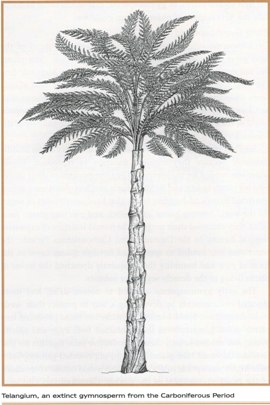
Figure 24. Early Gymnosperm -- Telanglum.
Early Land-Based Life - Animals
The first animals to come onto land were the arthropods because
they already had protective shells and legs that allowed them to
walk. The earliest evidence consists of millipede burrows from
the late Ordovician 450 MYA.
The first insects appeared in the Devonian 400 MYA. This class
became the most wildly successful of all multi-celled organisms,
with 800,000 known living species. The first flying insects
appeared during the Carboniferous Period 320 MYA (see Figure 25
for the timeline). At this time, the abundance of plants had
pumped up oxygen levels to 35%. This allowed land arthropods --
who breathe via tracheas in their abdomens instead of lungs --
to grow to enormous size. The best known example is the
dragonfly Meganeuropsis with a 30 inch wingspan. An artist's
rendition is shown in Figure 26. Cockroaches first appear at
this time too.
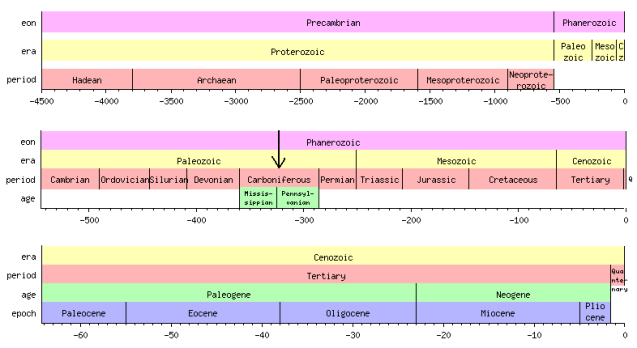
Figure 25. Carboniferous Period.
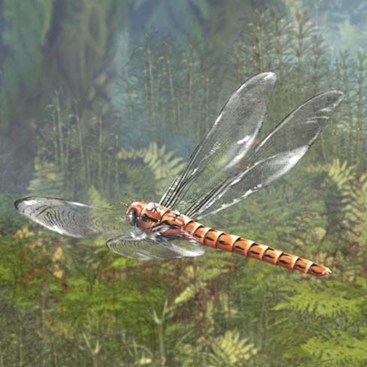
Figure 26. Meganeuropsis.
On the heels of the arthropods, vertebrates began migrating onto
land as well. Some lobe finned fishes developed primitive front
legs and lungs to facilitate bottom feeding and survival in
shallow, oxygen-poor bodies of water. They might have also
migrated overland between ponds during times of drought (as some
modern lungfish do today). A pivotal early intermediate species
is Tikaalik rosae (Figure 27). More advanced species include
Acanthostega and Ichthyostega (Figure 28), which are considered
the first true tetrapods (4-legged animals). These fish lived in
the late Devonian, between 285 and 360 MYA.
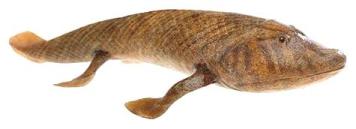 |
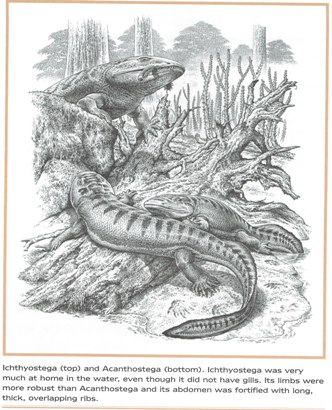
Figure
28. Early Tetrapods --
Acanthostega
& Ichthyostega. |
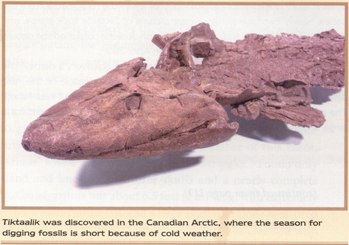
Figures
27. Pre-Tetrapod -- Tikaalik rosae. |
By the beginning of the Carboniferous period 360 MYA, true amphibians had evolved and became the top
predators. The 3.5 foot long Pederpes was the earliest tetrapod
to display five toes and forward-pointing feet. Seymouria
(Figure 29), living during the Permian period about 260 MYA was
an amphibian having reptile like characteristics. Although it
actually lived later than the very first reptiles, it
demonstrates a possible intermediate form.
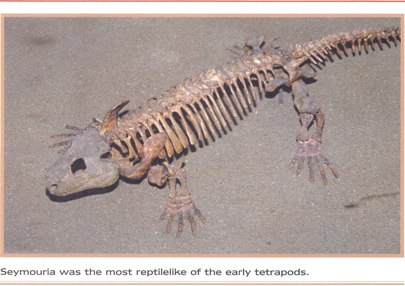
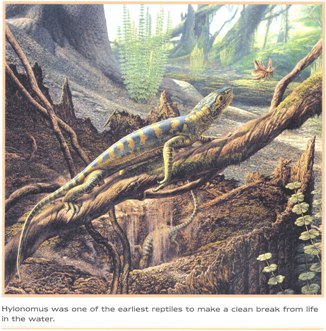
Figure 29. Reptile-Like Amphibian -- Seymouria.
Figure 30. Early Reptile -- Hylonomus.
As is well known, amphibians must lay their eggs in water and
have an aquatic larval stage. About 310 MYA, during the late
Carboniferous, the first amniotes - vertebrates who can lay
self-contained eggs on land - appeared as the first reptiles. This opened them up to vast new environments and ecological
niches. These early reptiles were quite small - just a few inches,
possibly because of the loss of the growth opportunity allowed
by a tadpole stage, and would have eaten mostly arthropods. The
earliest known reptile was Hylonomus, who is shown in Figure 30.
It was also at this time that the supercontinent Pangaea (all
earth) came together. This greatly facilitated the reptiles'
access to new habitats. A map is shown in Figure 31.
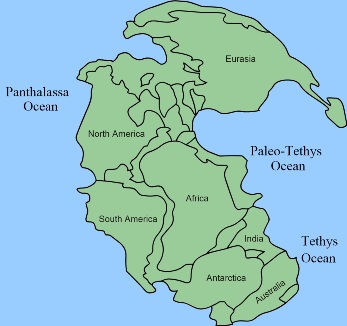
Figure 31. Pangea in Permian Period.
By the mid-Permian period about 270 MYA, reptiles had rapidly
diversified and grown (some up to 20 feet long). Some gave up
the carnivore lifestyle and were eating plants (which responded
by making themselves tougher to eat). The reptiles took over as
the top predators in the food chain. Figure 32 indicates this
period of time.
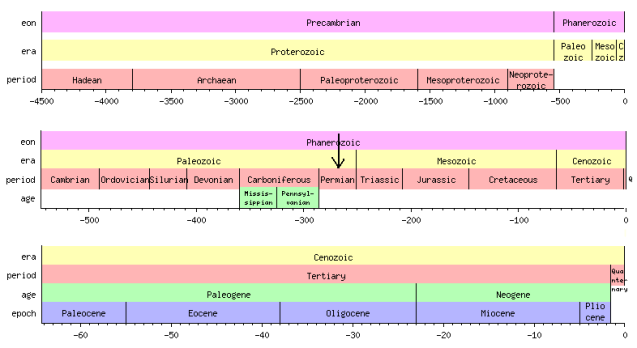
Figure 32. Permian Period.
One group, the synapsids or mammal-like reptiles, were the
ancestors to the mammals. The best known of these are the
sail-backed Dimetrodon (a carnivore) and Edaphosaurus (an
herbivore). A more advanced subgroup were the cyanodonts, who
had the important innovations of simplified jaws, differentiated
teeth, separate passages for breathing and eating, and legs set
more directly under the body for a more efficient gait. A
typical species was the 1˝ foot long Thrinaxodon. They are shown
in Figures 33 to 35. A late Permian scene is illustrated in Figure 36.
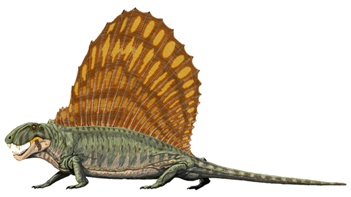
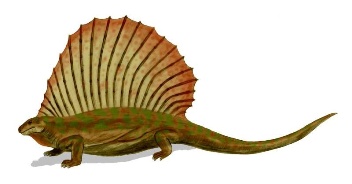
Figures 33. Mammal-Like Reptile -- Dimetrodon.
Figure 34. Mammal-Like Reptile -- Edaphosaurus.
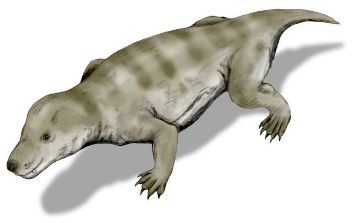
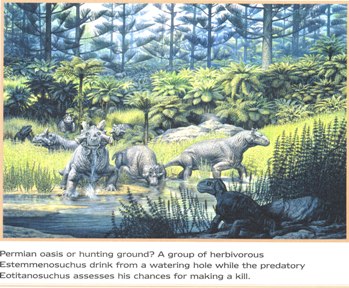
Figure 35. Cyanodont -- Thrinaxodon.
Figure 36. Late Permian Scene.
The early ancestors of the dinosaurs as well as all modern
reptiles and birds also appeared during the Permian, but were
small and marginalized by the synapsids. These groups were the anapsids (turtles) and diaspids (all other reptiles).
The Permian period and the Paleozoic Era ended 251 MYA with the
fourth great extinction - the Permian-Triassic Extinction. Heavy
and prolonged volcanic activity in Siberia triggered a runaway
greenhouse effect and oxygen levels plunged. 95% of all marine
species and 75% of all land species became extinct, resulting in
a total change in the balance of power between the older forms
and the newer, more adaptable ones. And so, the world entered
the Mesozoic era.
Pre-Dinosaurs
For perspective, 93% of earth's history to date has passed at
this point.
The world that emerged at the beginning of the Triassic period
(see the timeline in Figure 37 and landscape in Figure 38) was
hotter and dryer than the Paleozoic. These conditions favored
the reptiles over the more water dependent amphibians that
remained as well as conifers over the more primitive
spore-bearing plants.
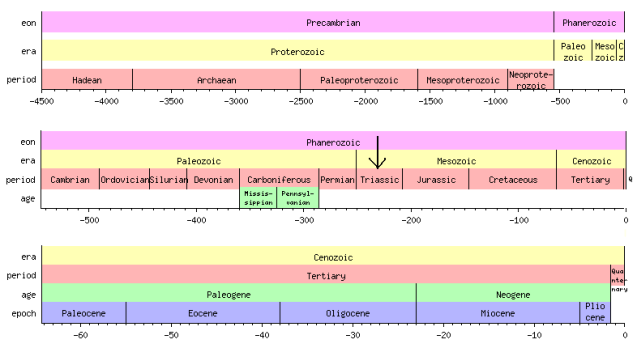
Figure 37. Triassic Period.
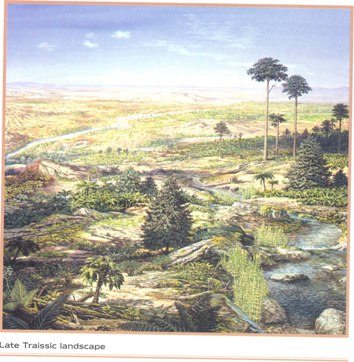
Figure 38. Late Triassic Scene.
The dominant reptiles of this period were the archosaurs. These
fell into three main groups: the crurotarsans (ancestors of
modern crocodiles), the ornithodirans (ancestors to the
dinosaurs and modern reptiles) and the basal archosaurs (who
have no living descendants).
The crurotarsans became the dominant reptiles during the early
to mid-Triassic. The group evolved a wide range of body plans,
from low stocky crocodile-like animals to slender near bipeds
resembling (but not related to) the later dinosaurs. The group
that evolved into the modern crocodilians was the Crocodylmorpha. Figure 39 shows a member of this group,
Protosuchus (first
crocodile).
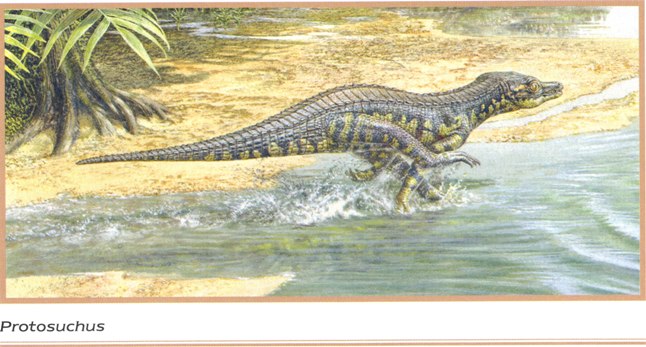
Figure 39. Early Crocodilian -- Protosuchus.
Among the most numerous reptiles of this time were the medium
sized herbivores known as the rhynchosaurs and the
trilophosaurids. They had sturdy skulls and jaws adapted to
eating the tough vegetation of the time - mostly seed ferns. When their food source disappeared at the end of the Triassic,
so did they. The most common rhynchosaur was the 4 foot long
Hyperodapedon (Figure 40).
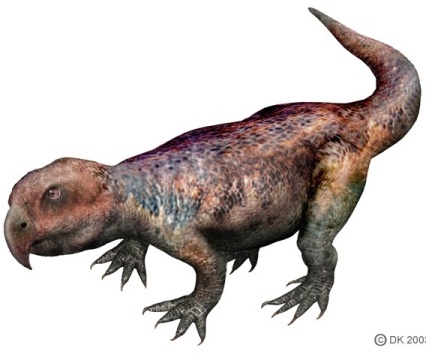
Figure 40. Rhynchosaur Reptile -- Hyperodapedon.
As stated previously, the direct ancestors to the dinosaurs and
pterosaurs (flying reptiles) were the Ornithodira. They had
modifications to the shoulder, hip, and legs that allowed a
fully upright stance to provide greater mobility and support for
greater weight. They fell into two subgroups. The saurischians
(lizard hipped) included all of the carnivores (called theropods
= "beast foot") and the giant long-necked herbivores (called
sauropods = "lizard foot"). The ornithischians (bird hipped)
encompassed all of the other herbivores. In the Triassic, they
were all relatively small and marginal in their ecosystems.
The earliest known true dinosaurs lived about 230 MYA in what is
now South America. Early carnivores include Staurikosaurus,
Eoraptor (dawn raptor), and Herrerasaurus. These are shown in Figures
41 to 43. The
first large, long-necked herbivores began to appear during this
time as well. The best known was the 20 foot long Plateosaurus
(Figure 44) who lived 210 MYA in what is now Europe.

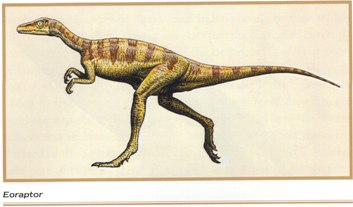
Figure 41.
Early Dinosaur -- Herrerasaurus.
Figure 42. Early Dinosaur -- Eoraptor.
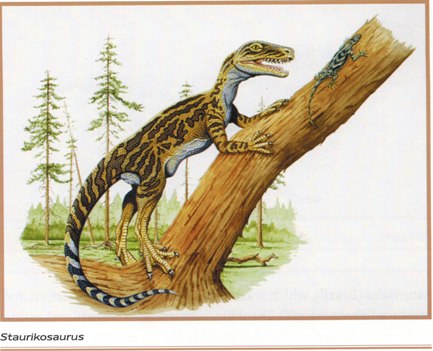
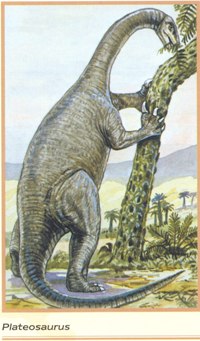
Figure 43.
Early Dinosaur -- Staurikosaurus.
Figure 44. Early Dinosaur -- Plateosaurus.
The mammal-like reptiles also continued to evolve during this
time, with species like Cygnonathus (Figure 45) and Probelesodon. However, they became ecologically marginal following the mass
extinctions in the late Triassic. The first turtles also appear during the late
Triassic. Invertebrate evolution was still in full swing as
well. Among the insects, the first bees, wasps, flies, and
mosquitoes appeared during this period.
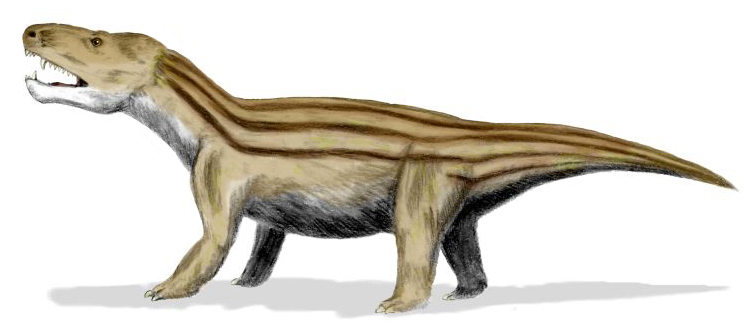
Figure 45. Mammal-Like Reptile -- Cygnonathus.
Many reptiles also returned to the sea. The fish-like
ichthyosaurs (fish-lizard) grew up to 77 feet long.
Plesiosaurs were long necked reptiles whose legs evolved into
paddles and grew to between 12 and 46 feet long, most of which
was the neck. Pliosaurs were short-necked plesiosaurs who grew up to 50 feet
long and were deadly hunters. Other marine reptiles included the
lizard-like placodonts and nothosaurs, and crocodiles. A
selection of these organisms is shown in Figure 46 to 50.

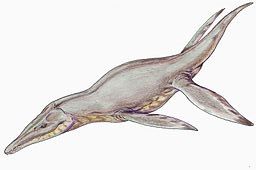
Figure 46. Aquatic Reptile -- Ichthyosaurus.
Figure 47. Aquatic Reptile -- Pliosaurus.
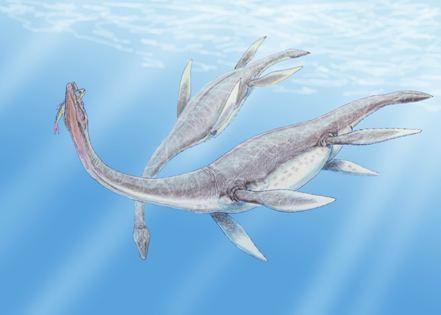
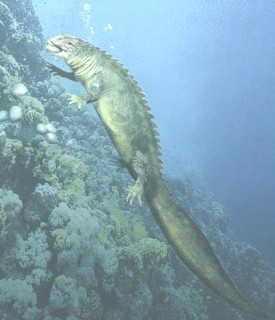
Figure 48. Aquatic Reptile -- Plesiosaurus.
Figure 49. Aquatic Reptile -- Placodus
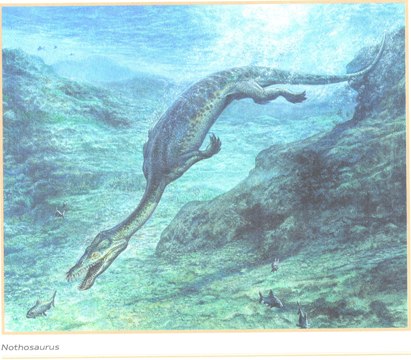
Figure 50. Aquatic Reptile -- Nothosaurus.
The rise of dinosaurs to being the dominant large animals
appears to have been enabled by a pair of mass extinctions in
the late Triassic. Extinction number 5 occurred 225 MYA and may
have been caused by an asteroid impact. Evidence for this is a
43-mile-wide crater in Quebec, Canada. This caused changes in
climate that decimated the non-dinosaur reptiles and left
tough-leafed conifers as the dominant plants, which the early
herbivore dinosaurs were better adapted to eat.
This was followed 200 MYA by the sixth mass extinction, known as
the Triassic-Jurassic extinction. It is believed to have been
caused by increased rainfall, volcanic eruptions, and possibly
additional asteroid impacts. 45% of all known species perished. Its position on the timeline is shown as Figure 51.
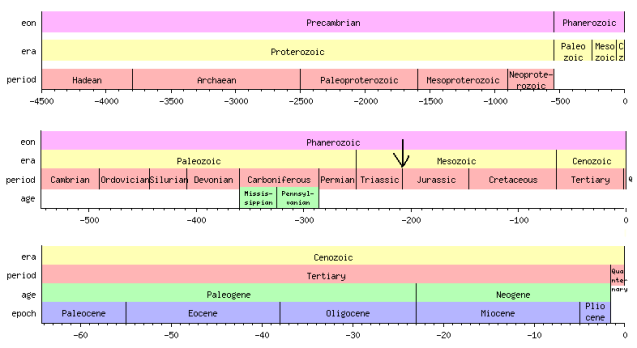
Figure 51. Jurassic Period.
The Age of Dinosaurs
During the early Jurassic period, the supercontinent Pangaea
began to slowly break up. At first this created two main
continents -- Laurasia, which contained what is now North
America, Europe, and Asia and Gondwana, which contained what is
now South America, Africa, Australia, and Antarctica. North
America also began to split off from Laurasia. Many mountainous
areas eroded over the late Mesozoic era, creating broad, flat
plains containing rivers and large lakes. A prominent example
was the 300,000 square mile lake that occupied much of the
interior of Australia. In addition, large areas of the other
continents were covered by shallow inland seas. As a result of
all of this, the climate remained mild worldwide.
As the Jurassic era progressed, the dinosaurs rapidly filled the
available ecological niches left empty by the Triassic
extinctions and spread all over the world.
The saurischian herbivores rapidly grew in size to the point
where they had to be full quadrupeds and became the dominant
herbivores during the Jurassic period. The best known of these
are the sauropods -- the long-necked dinosaurs, such as
Apatosaurus (headless lizard [formerly brontosaurus -
thunder lizard] -- Figure 52), Brachiosaurus, and Diplodocus. They
grew to become the largest land animals to ever walk the earth. Their long necks allowed them to reach foliage high up on trees
- up to 53 feet for the Brachiosaurus -- possibly augmented by
standing on their hind legs. The largest known sauropod was
Argentinosaurus, who was up to 100 feet long and weighed over 99
tons. The smallest known sauropod was Europasaurus at "only" 20
feet long.
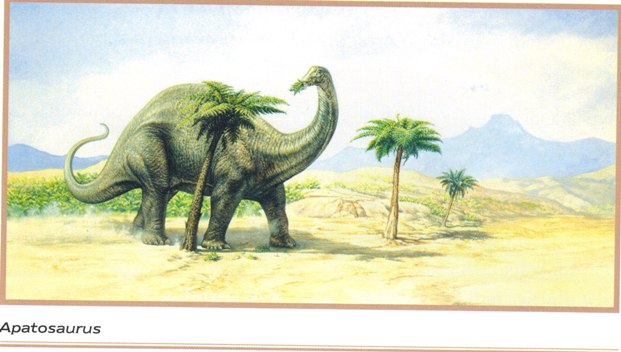
Figure 52. Saurapod Dinosaur --Apatasaurus.
The plants available for them to eat included conifers (both
with needles and scale-like leaves), seed ferns, ginkgos, and
cycads. They had very simple front teeth and no chewing teeth
and appear to have eaten by stripping or plucking leaves off of
branches, swallowing them whole, and digesting them via
fermentation in the gut.
The dominant group of carnivorous theropods during the middle
and late Jurassic were the Avetherapoda (bird beast foot"),
which had two subgroups - the Carnosauria and the Coelurosauria. The top predator and best-known carnosaur was the
Allosaurus,
which lived about 150 MYA and measured 40 feet long (Figure 53). Coelurosaurs were still small and marginal at this time (but
would become important later). The best known example is
Compsognathus (Figure 54), which was an insectivore the size of
a chicken.
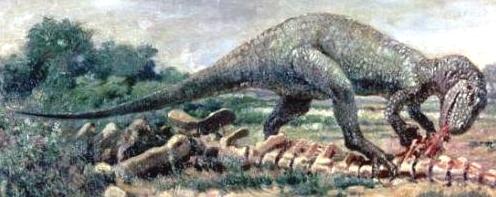
Figure 53. Theropod Dinosaur -- Allosaurus.
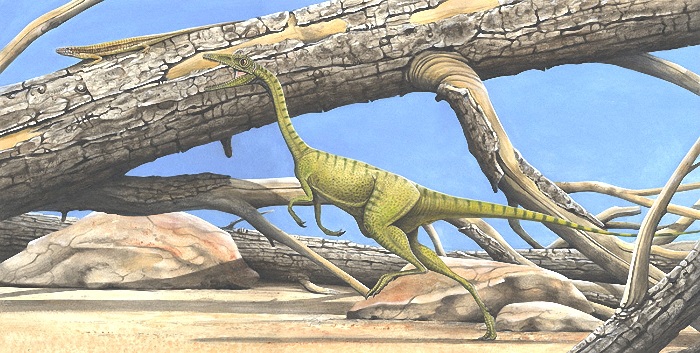
Figure 54. Theropod Dinosaur -- Compsognathus.
The ornithischians also thrived and diverged into a wide range
of animals during the Jurassic. Basal members of this group in
the early Jurassic included Lesothosaurus (Figure 55), which was
still quite small at about 3 feet long. The stegosaurs first
appeared in the late Jurassic about 170 MYA. They ranged
in size from 10 to 30 feet long and had plates or spikes along
their back and spikes at the end of their tail. Stegosaurus is shown
in Figure 56. The ankylosaurs were characterized by being
covered by bony body armor and spikes with large clubs on the
ends of their tails and eventually reached sizes up to 33 feet
long. Two typical species were Euplocephalus and Edmontia
(Figure 57).
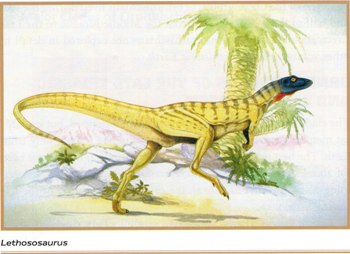
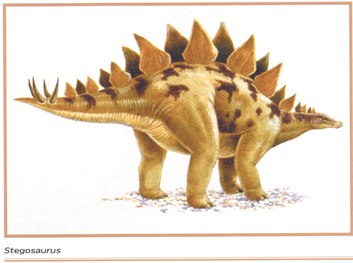
Figure 55. Ornithischian Dinosaur -- Lesothosaurus.
Figure 56. Ornithischian Dinosaur -- Stegosaurus.
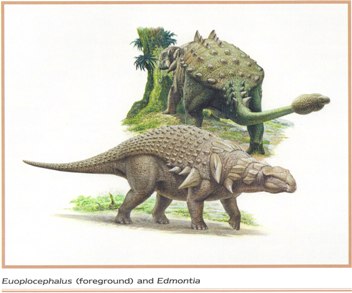
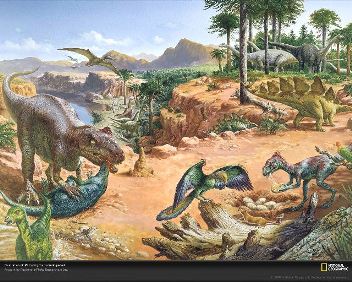
Figure 57. Ankylosaurs -- Euplocephalus &
Edmontia.
Figure 58. Late Jurassic Scene.
To summarize the preceding, a late Jurassic scene is shown as
Figure 58.
The Cretaceous Period began about 145 MYA, shown on the
timeline as Figure 59. It was marked by an
accelerated breakup of the Pangaea and its Laurasia and Gondwana
subcontinents. The undersea mountain building that caused the
spreading, combined with melting ice caps due to greenhouse
warming of the climate, raised sea levels. At its maximum 100 MYA, 1/3 of the present day land area was under water, including
large inland seas dividing North America and Australia. This
gradually subsided until the end of the period 65 MYA. Maps of the
earth at the beginning and end of the period are shown as Figure
60. This break-up of the continents caused populations to be
isolated from each other, resulting in increased evolutionary
divergence.
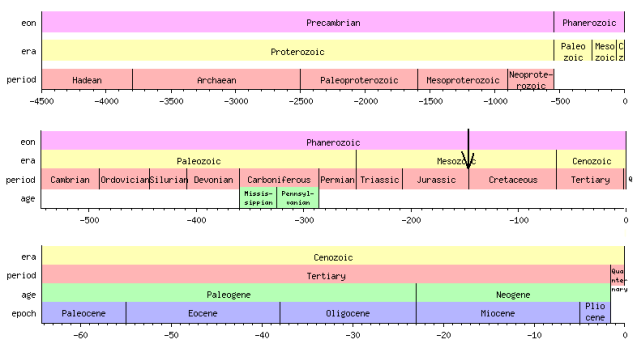
Figure 59. Cretaceous Period.
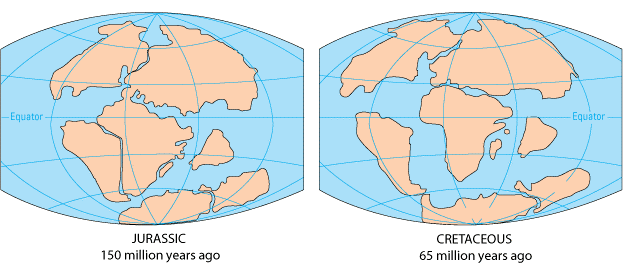
Figure 60. Continents at Start and End of
Cretaceous Period.
Plant evolution also continued with the development of modern
angiosperms - flowering plants, first appearing about 125 MYA. These could reproduce much more quickly than the gymnosperms and
contained more concentrated and available nutrients. They
gradually became the dominant class of plants. This, in turn,
drove the evolution of animals adapted to eating them -
including dinosaurs, mammals, and termites. It also drove
the development of pollinating insects -- such as bees,
butterflies, and moths. Theropod diversity exploded during the Cretaceous and
comprised several main lines.
The first of these were the spinosaurs, which included the
largest carnivores that ever lived on land and were specialized
for eating fish. They had long spines on their back, long
forearms, and a long skull and snout resembling a crocodile. The
archetypal species was the 50-foot-long Spinosaurus (Figure 61).
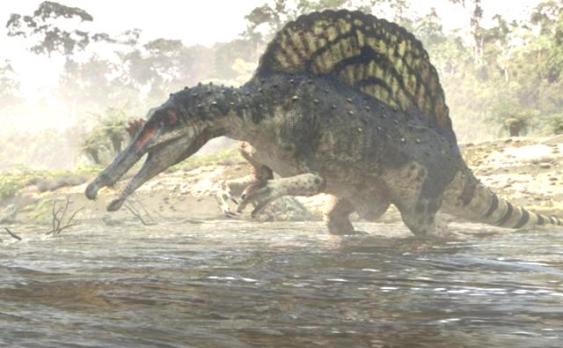
Figure 61. Spinosaurus.
Among the Avetheropoda, the Carnosauria remained the dominant
large predators in the southern hemisphere. In the north, the Coelosauria became the dominant subgroup and encompassed a large
variety of species. The most famous and largest at 40 feet long
and weighing eight tons was Tyrannosaurus Rex, which lived in
the late Cretaceous (Figure 62). The group also
included several subgroups of slender dinosaurs ranging in size
from 6 to 35 feet long, many of which appeared to be omnivores -
eating both plants and small animals - and had feathers. A
well-known member of this group is the 12 foot long Struthiomimus (Figure
63). Some became full herbivores, such as
the Therizonosaurus. Finally, the group included the dromaeosaurs - popularly known as the raptors - a group of
mid-sized, highly efficient predators. The best understood of
this group is the 10 foot long Deinonychus (Figure 64), known
for the large claw on its feet.
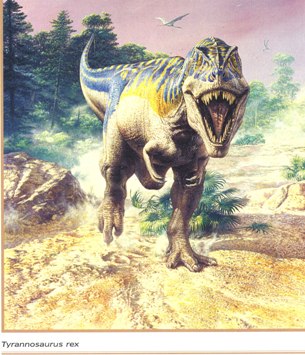
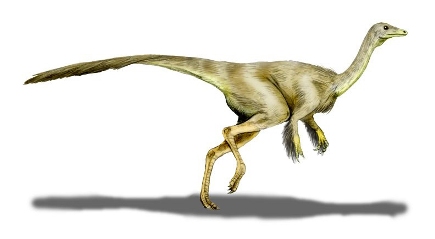
Figure 62. Tyrannosaurus Rex.
Figure 63. Struthiomimus.
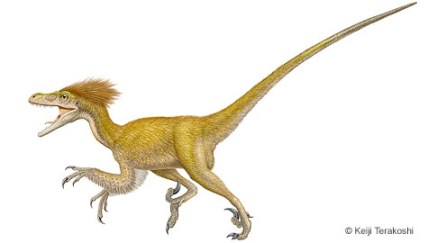
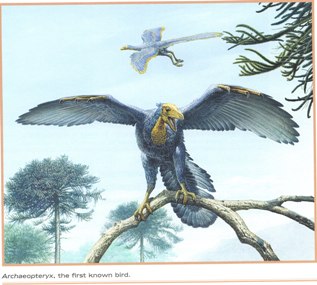
Figure 64. Deinonychus.
Figure 65. Early Bird -- Archaeopteryx.
In the late Jurassic and early Cretaceous periods, one or more
offshoots of the smaller colelosaurs developed into what became
modern day birds. The earliest known true bird species is
Archaeopteryx (Figure 65). This crow-sized animal lived 135 MYA
and still exhibited some dinosaurian features, such as teeth,
claws in the wing, and a long tail. By the middle of the period,
birds had taken on their modern anatomy and occupied a wide
range of niches - arboreal, terrestrial, and aquatic. Because of
their dinosaurian origin, many say that dinosaurs never really
died out and that they still live among us as birds (Figure 66).
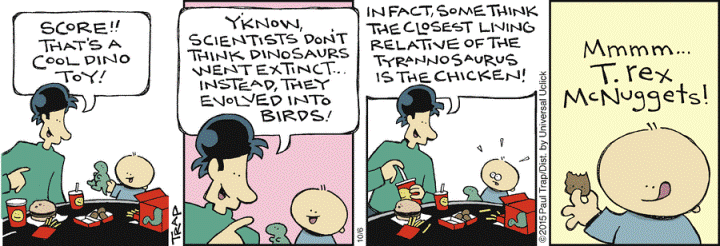
Figure 66. That a Baby -- Eating Chicken.
The Cretaceous also saw the flowering of the ornithischians, who
diversified in multiple directions. The group's most notable
innovation was the evolution of closely packed teeth that
functioned as molars plus the ability to move their jaws
sideways, which allowed them to thoroughly chew their food and
extract the maximum amount of nutrition. Many species were also
notable for traveling in herds and actively raising their young. The main groups were the iguanodonts, hadrosaurs ("duck billed"
dinosaurs), ceratopsians (horned dinosaurs), and
pachycephalosaurs (bone-headed dinosaurs). Figures 67 to 70 show
representative members of these groups: the 37 foot long Iguanodon
(which was the second fossil animal identified as a dinosaur [in
1825] after Megalosaurus), a sampling of hadrosaurs, the 15 foot long
Pachycephalosaurus and the 6 ton, 30 foot long Triceratops.
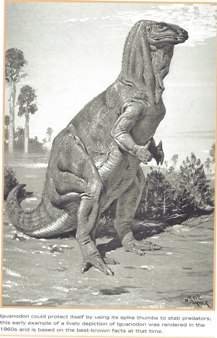
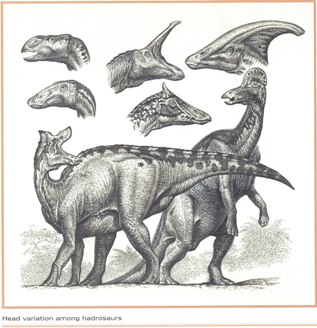
Figure 67. Iguanodon.
Figure 68. Representative Hadrosaurs.
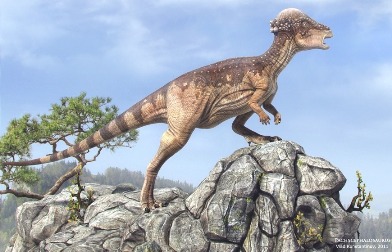
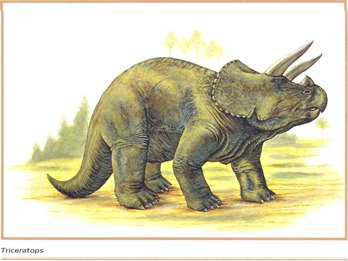
Figure 69. Hadrosaur -- Pachycephalosaurus.
Figure 70. Ornithischian Dinosaur -- Triceratops.
The sauropods gradually diminished in variety and importance,
possibly due to an inability to take adequate advantage of the
new vegetation and/or compete with the ornithischians.
However, many species did persist. This included the
previously mentioned Argentinosaurus and the only 20 foot
long
Magyarosarus in
Europe.
An area still under hot debate is whether dinosaurs were warm or
cold blooded. Current analysis indicates both. The large sauropods were likely able to maintain a warm body temperature
from the heat generated by their base metabolism and digestion
of food by virtue of their size alone. Smaller dinosaurs may have
eventually evolved limited endothermy as indicated by high
juvenile growth rates and the presence of feathers to provide
insulation to retain heat.
In addition to the dinosaurs, other groups of reptiles continued
to thrive and many took to the air and water. The first snakes
also arose in the mid-Cretaceous.
The flying reptiles were the pterosaurs. They ranged in size
from that of a crow to having wingspans of over 40 feet and
occupied many ecological niches. They first appeared in the late
Triassic period and continued through the end of the dinosaurs. Figure 71 shows
Pterodactylus (without tails) and Rhamphorhynchus
(with tails). They were likely warm-blooded.
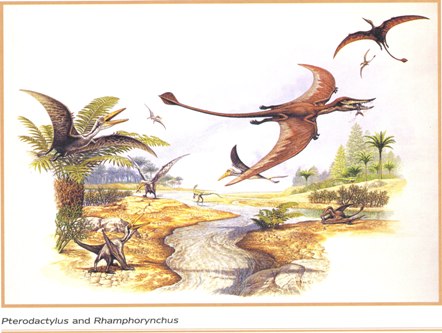
Figure 71. Pterosaurs -- Pterodactylus &
Rhamphorynchus.
Toward the end of this period, one more reptile returned to the
sea about 90 MYA, filling the niche of the recently extinct
ichthyosaurs - the mosasaurs. They ranged in size from 10
to 50 feet long and had flippers and an elongated body. Mosasaurus is
shown in Figure 72. Turtles also took to the sea during this
time and grew up to 13 feet long.
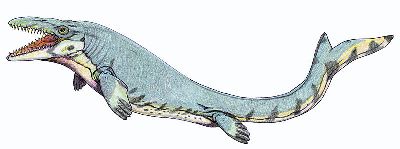
Figure 72. Aquatic Reptile -- Mososaurus.
Coming into the Mesozoic era, early mammals became very small,
making them hard to find in the fossil record. Most were likely
insectivores. The earliest mammals continued bear their young by
laying eggs and are known as monotrems. The only living members
of this group are the platypus and the echidnas (spiny
anteaters) in Australia and South America. A typical early
mammal is the early Jurassic, half-inch long Megazostrodon
(Figure 73). A few mammals grew to larger size, such as the
early Cretaceous, 3.3 foot long Repenomamus. The most abundant
group during this time was the rodent-like multituberculates,
which included herbivores and omnivores. The earliest
identifiable marsupial and placental mammals, appear during the
Cretaceous era. They appear to have evolved in parallel from an
unknown common ancestor, but a species sharing characteristics
of both was the mouse-sized Eomaia (dawn mother -- Figure 74).
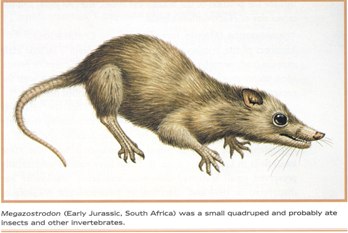
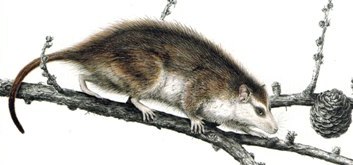
Figure 73. Early Mammal -- Megazostrodon.
Figure 74. Early Mammal -- Eomaia.
About 65.5 MYA, a 6 mile wide asteroid slammed into the earth at
what is now the Yucatán Peninsula in Mexico. The energy from
this would have caused massive heating of the atmosphere and
threw up massive amounts of debris that would have subsequently
blocked the sun for several years. During the same period, there
was massive volcanic activity at the then border between Africa
and India. The net result of this was the extinction of up to
75% of all species on earth, including the non-avian dinosaurs. This seventh great extinction forms the Cretaceous-Tertiary
(K-T) boundary, shown on the geologic timeline in Figure 75.
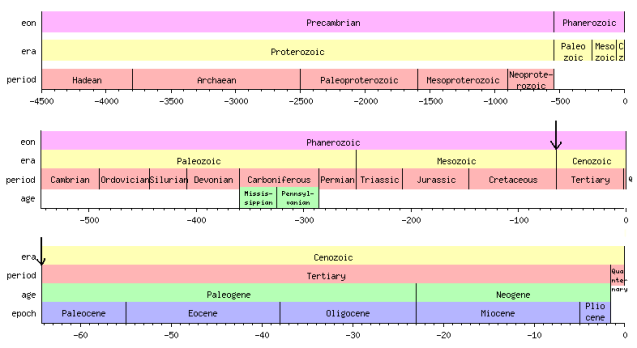
Figure 75. Cretaceous - Tertiary Period Boundry.
The Age of Mammals and Birds
For perspective again, 98.5% of earth's history to date has
passed at this point.
The K-T extinction brought the earth into the Cenozoic Era, the
Tertiary period and the Paleocene epoch. It also ushered in the
Age of Mammals. The separation of the continents continued
during this time, leading to extensive mountain building. This
included the Appalachians, Rockies, Alps, and Himalayas. It also
raised the continental centers, draining the inland seas. The
climate remained generally warm during the early Cenozoic, even
at the poles. At the Paleocene / Eocene boundary 55 MYA, there
was a sudden global warming, most likely due to CO2 and methane
being released from the mid-ocean volcanic ridges that were
driving continental spreading. A map of the world 50 MYA (early
Eocene epoch) is shown in Figure 76.
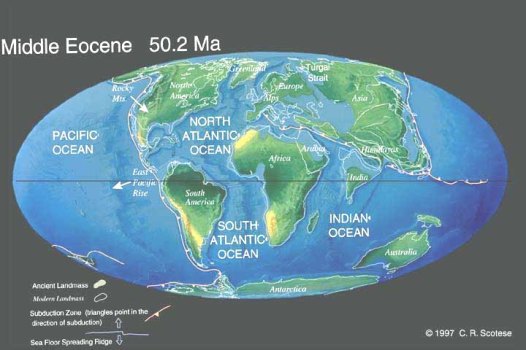
Figure 76. Early Cenozioc Era Contintenents 50
Million Years Ago.
Because the various groups of mammals developed over extended
periods of time, it is most efficient to discuss their histories
by taxonomic order, rather than strictly chronologically. So, I will now give a
quick overview of the Epochs of the Cenozoic era (see Figure
77):
Paleocene 65 MYA - 55 MYA
Eocene 55 MYA - 38 MYA
Oligocene 38 MYA - 23 MYA
Miocene 23 MYA - 5 MYA
Pliocene
5 MYA - 2 MYA
Pleistocene 2 MYA - Present
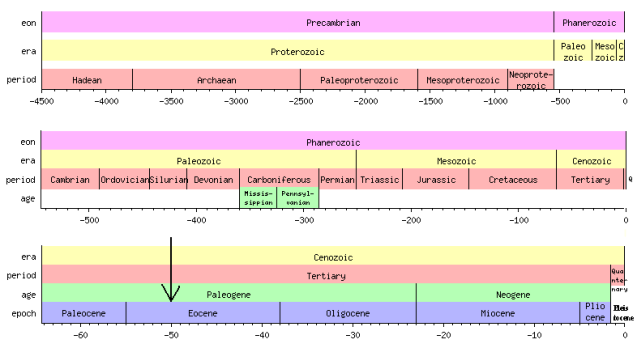
Figure 77. Eocene Epoch.
Following the extinction of the dinosaurs, mammals diversified
to fill the emptied ecological niches. Most remained small and
generalized during the Paleocene epoch, but some became
specialized herbivores and carnivores. Many of the early mammals
strongly resembled modern species, but, for the most part, do
not appear to be related - a prime example of convergent
evolution. Placental mammals dominated in Asia, Europe, Africa,
and North America. Meanwhile, marsupials appear to have
originated in Asia and migrated to what is now South America and
Australia via very circuitous routes, where they became the
dominant group.
Marsupials dominated in South America for most of the Cenozoic. Most were small omnivores, but there was a family of larger
carnivores called Sparassodontia. The most interesting one was
the 4 foot long Thyacosmilus, which lived during the late
Miocene 10 MYA and resembled (but was completely unrelated to) a
saber-toothed cat (Figure 78). However, they were mostly edged
out by placental mammals that migrated from North America when a
land bridge formed during the Pliocene epoch 5 MYA.
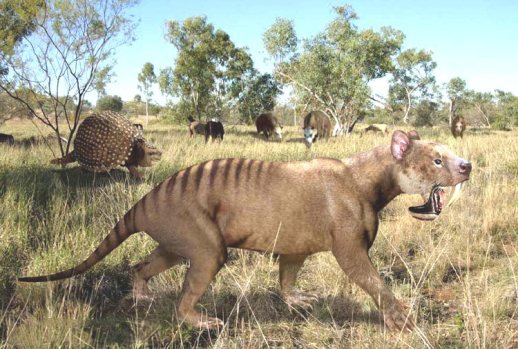
Figure 78. South American Saber-Toothed Marsupial -- Thyacosmilus.
In contrast, Australia became isolated after the initial
marsupial immigration during the early Eocene and remained that
way, so they came to occupy all of the available ecological
niches as omnivores, specialized herbivores, and apex predators. Figure 79 shows representative marsupials from the
Pleistocene
epoch (2 MYA) -- the herbivores Disprotodon, Palochestes, and
Zygomaturus. Marsupials remain the dominant wild mammals there
to the present day.
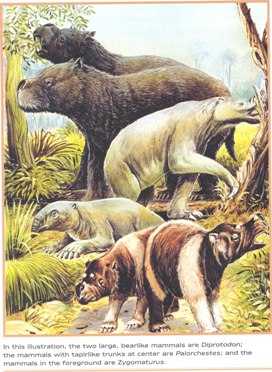
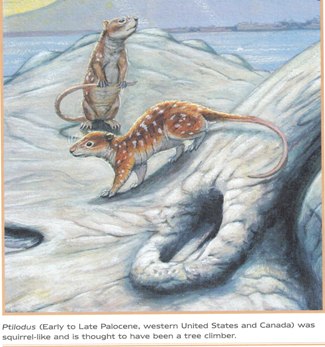
Figure 79. Early Australian Marsupials.
Figure 80. Multituberculate Mammal - Ptilodus.
Returning to the placental mammals, the multituberculates
carried over into the Cenozoic as the most diverse and numerous
group during the Paleocene. A typical species was the 20 inch
long Ptilodus (Figure 80). However, they were rapidly supplanted
as new, better adapted groups appeared. The first large browsers
were the Pantodonta ("all teeth"), such as the 7.5 foot long
Coryphodon (Figure 81) during the middle Eocene. Another group
of large browsers were the Dinocerata, noted for having multiple
pairs of small horns arrayed along their skull, such as the
rhinoceros-sized Uintatherium (Figure 82). The Condylarthra were
a very diverse group that included both semi-hoofed herbivores
and carnivores, such as the coyote-sized Mesonyx (Figure 83) and
the largest mammalian predator ever identified - the 17 foot
long, 6 foot high Andrewsarchus. Most of these groups of animals
became extinct by the end of the Oligocene epoch 25 MYA as they
were replaced by the modern mammal orders.
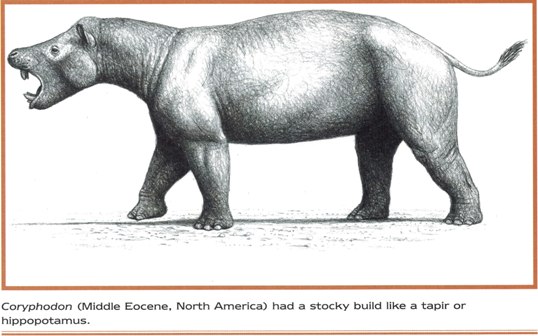
Figure 81. Eocene Epoch Pantodont -- Coryphodon.
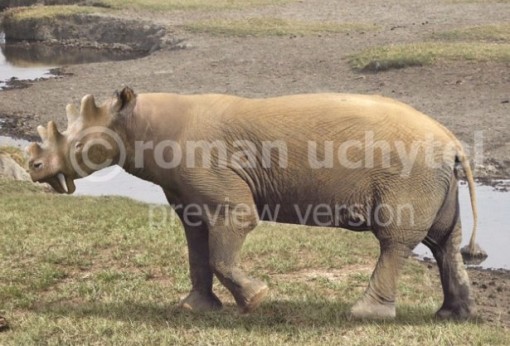
Figure 82. Dinocerata Mammal -- Uintatherium.
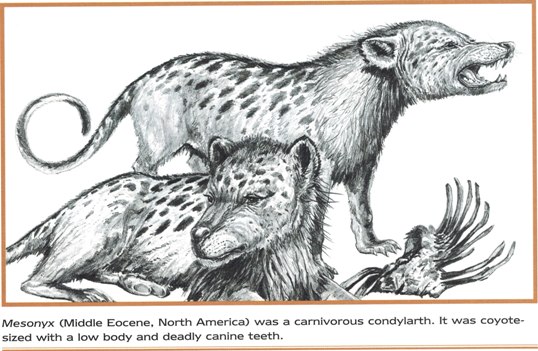
Figure 83. Condylarth Carnivore -- Mesonyx.
Hoofed mammals are generally classified as ungulates, but do not
necessarily share a common ancestor. They include the even-toed Artioadctyla such as pigs, camels, cows, etc., odd-toed
Perissodactyla such as rhinoceroses and horses, and the marine
Cetacea (whales). The earliest members first appeared in the
late Paleocene. Today, they constitute half of all herbivorous
mammals.
The best known examples of these groups' evolution are camels
and horses, who started as small browsers in North America in
the late Eocene 40 MYA, gradually grew into large grazers, then
migrated to Asia, Africa, and South America during the Pliocene
5 MYA, and became extinct in North America. In contrast, deer
and bovines (cows and buffalo) started in Eurasia and migrated
in the other direction. Two unusual members of the rhinoceros
family during the Oligocene were the 18 foot high, 27 ton Paraceratherium
(Figure 84) and the scoop-horned Embolotherium (Figure 85). Whales evolved from a common ancestor with the hippopotamus in
the early Eocene. Early intermediate species include the
coyote-sized Pakicetus and the sea lion sized Ambulocetus
(Figure 86). Note that they still had long legs and likely
spent significant time on land. The start of the ice ages in the late Pliocene
about 4.5 MYA caused a change in ocean currents which created
concentrations in whales' prey animals. This triggered a rapid
increase in size to the behemoths we have today.
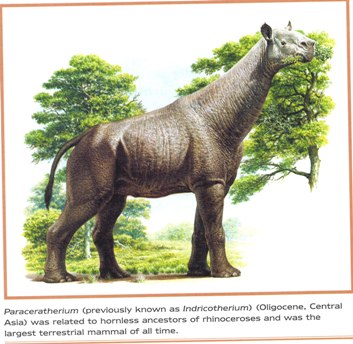
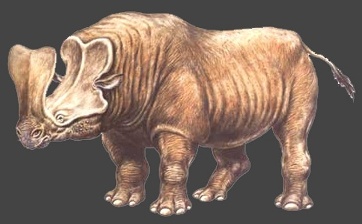
Figure 84. Oligocene Rhinoceros -- Paraceratherium.
Figure 85. Embolotherium.
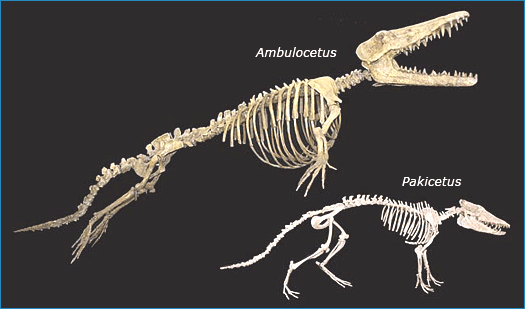
Figure 86. Whale Precursors -- Ambulocetus &
Pakicetus.
Ancestral Proboscidians (elephants) first arose in Africa as
pig-sized animals during the late Paleocene and early Eocene
epochs. They expanded into Europe, Asia, and North America over
land bridges during the Miocene epoch 15 MYA and into South
America during the Pliocene 3.5 MYA. This group included
mastodons, mammoths, and modern elephants. Typical early members
were the Eocene epoch Moeritherium (Figure 87) and the Miocene epoch
Amebelodon (Figure 88). Of course, the best known member is the
Pleistocene epoch Wooly Mammoth (Figure 89). The hyrax and
manatee are close relatives and all belong to a larger clade
called Paenungulata.
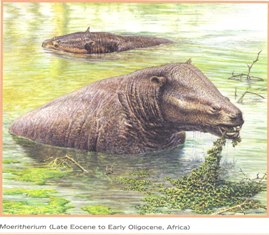
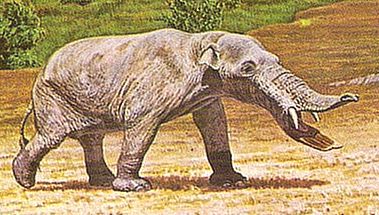
Figure 87. Eosene Elephant -- Moeritherium.
Figure 87. Miocene Elephant -- Amebelodon.
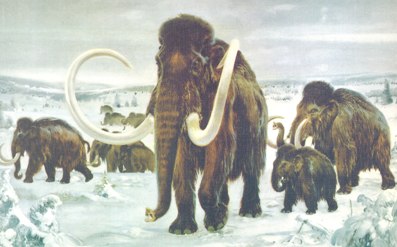
Figure 88. Pleistocene Elephant -- Wooly Mammoth.
From the Paleocene to the Miocene epochs, the dominant northern
hemisphere carnivorous mammals were the Creodonts. They were
very diverse, taking on body types resembling dogs, bears,
hyenas, and cats. They even included saber-toothed species. One
example is the horse-sized Hyaenodon (Figure 89).
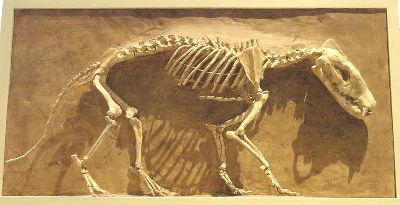
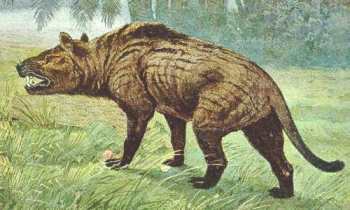
Figures 89. Creodont Carnivore -- Hyaenodon.
The Creodonts were supplanted by the Carnivora, who had bigger
brains, more adaptable teeth (almost all are partially
omnivorous), and a more flexible foot structure. They became
dominant during the Oligocene epoch ~35 MYA. The two main groups
are the Feliformes (cats, civets, and hyenas) and the Caniformes
(dogs, weasels, bears, and seals). An early carnivore ancestral
to dogs, weasels, raccoons, and bears was Miacis (Figure
90). Seals evolved
from bears during the late Oligocene. A possible seal ancestor
was the early Miocene Enaliarctos, which still used its legs and
feet to swim (Figure 91). The best known of the
prehistoric big cats was the late Pleistocene Smilodon, or
saber-toothed cat in the Americas. Many specimens, along with
other species, have been found in the La Brea tar pits,
located in what is now downtown Los Angeles, California (Figure
92).
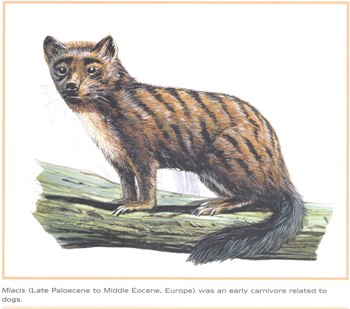
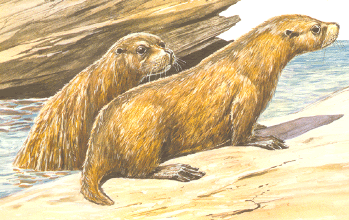
Figure 90. Early Carnivore -- Miacis.
Figure 91. Early Seal -- Enaliarctos.
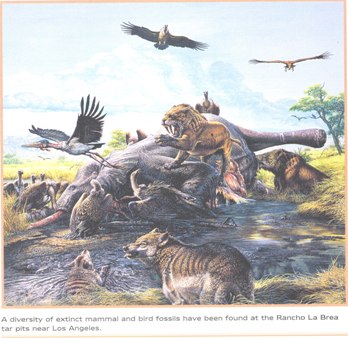
Figure 92. La Brea Tar Pits -- Now Los Angeles, CA.
The most diverse and numerous group of mammals are the rodents,
who first appeared during the Paleocene epoch, about 55 million
years ago. They quickly displaced the multituberculates and the
condylarths. The largest prehistoric species included the 10
foot long, 1,500 pound guinea pig Phoberomys, who lived some 20
MYA during the Miocene epoch and the Pleistocene epoch
Castoroides, an 8 foot long beaver. Along with the lagomorphs -
rabbits and chinchillas -- they belong to the larger clade of
glires.
The remaining mammal groups include the following. Insectivores
(moles, shrews, and hedgehogs) most closely resemble the
earliest ancestral mammals. The Xanarthrans include armadillos,
sloths, and anteaters. In contrast to most other mammals, they
originated in South America and migrated north via the Miocene
epoch land bridge. The best known members of this group are the
Pliocene - Pleistocene epochs giant armadillo, Glyptodon
(Figure 93), and
the giant South American ground sloth, Megatherium
(Figure 94). Note their resemblance to the dinosaur ankylosaurs
and Iguanodon -- another
prime example of convergent evolution.
The pangolins (spiny
anteaters) live in Europe and Asia.
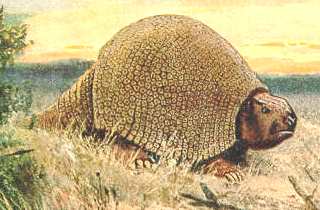
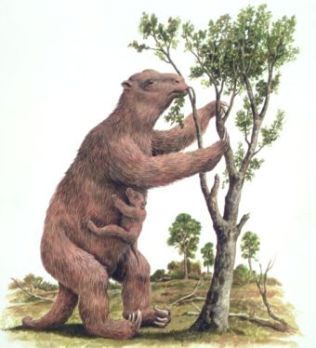
Figure 93. Giant Armadillo -- Glyptodon.
Figure 94. Giant Ground Sloth -- Megatherium.
Tree shrews, flying lemurs, bats and primates belong to the
order Archonta. Their earliest ancestors appeared during the
Paleocene and Eocene epochs and resembled rodents, both in body
plan and dentition. An example is the squirrel-like Pleasiadapsis
(Figure 95). The earliest positively identified bats lived
in the early Eocene. With over 1,000 living species, they
now constitute the second largest group of mammals. The
earliest primates -- lorises and lemurs -- first appeared in the
mid-Paleocene about 60 MYA. Some lemurs on isolated Madagascar
grew as large as gorillas, but became extinct upon the arrival
of humans 2,000 years ago. Monkeys first appear in the fossil
record
during the mid-Eocene, 45 to 50 MYA.
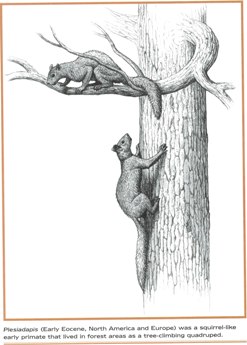
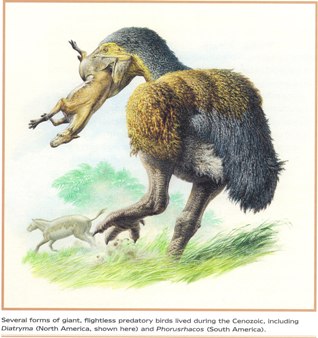
Figure 95. Early Primate -- Pleasiadapsis.
Figure 96. Giant Flightless Bird -- Diatryma.
The radiation and diversification of birds into the newly
vacated ecological niches was just as extensive as for mammals. During the Cretaceous
period, there were still birds with residual
reptilian characteristics, such as teeth and long tails. However, they all became extinct at the K-T boundary. Some
modern orders of birds (such as songbirds) made it over the
transition and all of them had appeared by the mid-Cenozoic. Large, flightless birds evolved independently several times. This included the 7-foot-tall, North American, Eocene epoch
predator Diatryma (Figure 96), which was related to modern ducks
and geese. It also includes the ancestor to the ostrich, emu,
and kiwi. They partially took the place of the mid-sized theropod dinosaurs. The largest flying bird discovered was the
South American condor Argentavis, with a 28 foot wingspan and 12
foot-long body, who lived in the Miocene epoch, about 10 MYA.
Many reptiles also survived across the K-T boundary, including
lizards, turtles, snakes, and crocodiles. Some crocodiles even
adapted to living and hunting on land, such as the Eocene epoch
Pristichampus (Figure 97). The last major group of insects
--
fleas -- also appeared during the Miocene epoch.

Figure 97. Eocene Crocodile -- Pristichampus.
Apes and Humans
By the end of the Oligocene / beginning of the Miocene epochs 23
MYA, the Americas had separated enough from the other continents
to strongly affect the climate and the northern hemisphere
became cooler and dryer and tectonic forces made the landscape
much more rugged. Many tropical jungles became temperate forests
and grassy plains and animal populations became isolated. Ice
caps also began to form at the poles, lowering sea levels and
creating land bridges between Asia, North America, and South
America. This point in time is shown in Figure 98.
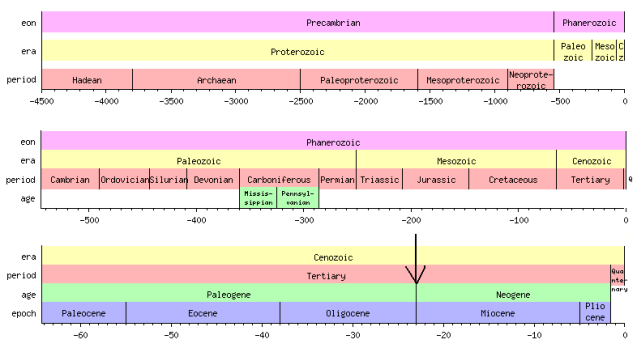
Figure 98. Miocene Epoch.
It was in this environment that the first apes appeared. They
were adapted for life both in trees and on the ground. One
intermediate genus between monkeys and apes was Proconsul
(Figure 99), whose three known species ranged in size from 24 to
190 pounds. However, the species Morotopithecus is more likely
ancestral to modern apes. A possible candidate for the last
common ancestor of the great apes (chimpanzees, gorillas, and
humans) was the mid-Miocene, 75 pound Pierolapithecus in east
Africa. The first hominins (human ancestors) separated from the
other apes in the late Miocene, about 8 MYA.
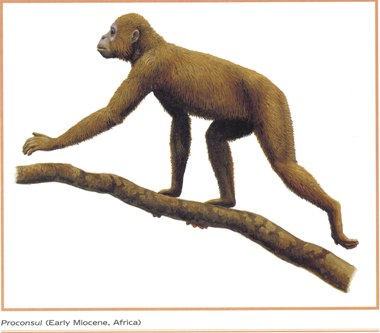
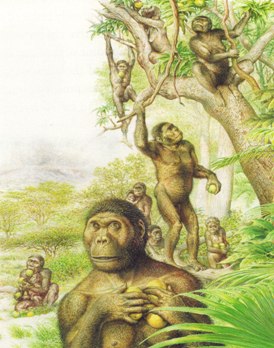
Figure 99. Monkey-Ape Intermediate -- Proconsul.
Figure 100. Early Hominin -- Australopithecus.
The
earliest definitive hominins belonged to the genus
Australopithecus, which lived in east Africa during the Pliocene
epoch between 4 and 1 MYA and walked fully upright (Figure 100). The first confirmed tool maker was
Homo habilis (handy man), which appeared
in east Africa around 2.2 MYA. They were followed by Homo
erectus about 1.8 MYA, who also spread throughout Africa and
into Europe and Asia. They are associated with the first
confirmed use of fire about 500 KYA (thousand years ago) in
Europe and Asia. Homo Heidelbergensis appears about 525 KYA and
had more modern features. Neanderthals were a northern side
branch that existed from 200 KYA to 25 KYA. Modern humans (Homo
sapiens [wise man]) appeared 160 KYA in east Africa and spread throughout
the world. A timeline of early human evolution is shown in
Figure 101.
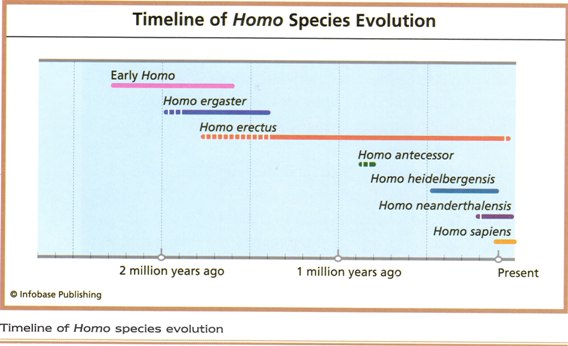
Figure 101. Timeline of Human Evolution.
The Pleistocene epoch began 2 MYA with the Great Ice Age - a
period of alternating massive glaciers advancing as far south as
the modern New York City and warmer interstitial periods. The
water tied up in the glaciers lowered sea levels by up to 200
feet, creating land bridges to areas that are now separated,
allowing the migration of species to those places. This point in
time is shown in Figure 102.
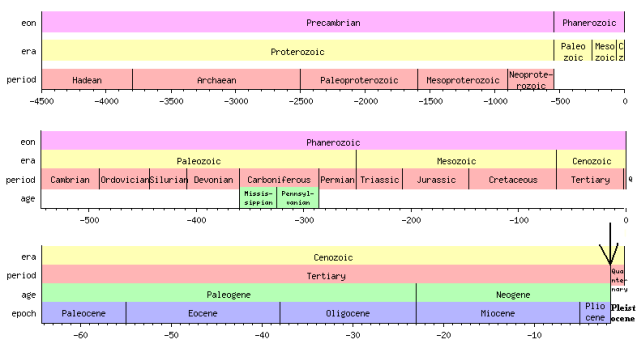
Figure 102. Pleistocene Epoch.
Humans migrated to Australia about 50 KYA, which corresponds to
the mass extinction of the largest marsupials. This continues
into the present as habitat is destroyed by human encroachment
and competition from introduced placental mammals. Humans
populated the Americas some 12 KYA, also associated with the
mass extinction of large mammals.
We are currently in the midst of a warm interval that started
about 12 KYA. This allowed for the development of agriculture
independently in the Middle East and what is now Mexico about 10 KYA, followed by writing in the Middle East 5 KYA and the
Americas 1.5 KYA, precipitating the development of the complex
culture and technology that we have today.
The Future
Since then, the rapid development of technology has allowed us
to alter the environment more than any other organism since the
cyanobacteria started producing free oxygen. Indeed, our
influence is so great that some biologists suggest that the
current age be called the Anthropocene Epoch. CO2
levels are already the highest they have been in 55 MY.
Human induced climate change may lead to the 8th great extinction.
One study predicts up to one million species could become
extinct. If this
does happen, life overall will carry on and new species and
ecosystems will develop.
Overall, the most successful groups of organisms - both in the
number of species and individuals - have been the insects and
bacteria. Compared to them, vertebrates are just a trace
constituent of life on earth. Figures 103 make these
points. Indeed, our own bodies contain more bacterial
cells than human ones.


Figures 103. B.C. Comic Strips on a Post-Human
World.
If humans disappear, our buildings and similar artifacts will
disappear within a century or so. Figure 104 shows an old
warehouse in Baltimore Harbor that has already been taken over
by trees. The longest-lived remnants of our
civilization will be plastics and toxic chemicals (100,000 years or more), the
sculptures on Mt. Rushmore (7 million years), radioactive waste
(up to several billion years), and alterations to the landscape
due to large scale mining (permanent).

Figure 104. Old Warehouse Taken Over by Trees.
But, not forever. The sun now is about 30% hotter than it was 4
billion years ago. The sun is in balance between the force of
gravity and the heat generated by the thermonuclear reactions in
its core. Over time, it has been slowly contracting and heating
up. In about half a billion years, it will become hot enough to
vaporize all of earth's surface water, pretty much doing it in
for life. Perhaps a few organisms will survive in the deepest
aquifers or oil wells.
In about 5 billion years, the sun will slowly expand in size as
far as the earth's orbit, incinerating it and turning the sun
into a red giant. Shortly after that, all of the hydrogen in the
sun's core will be exhausted and it will collapse until it is
dense enough to start burning helium (largely created by the fusion of
hydrogen) into oxygen and carbon. Eventually, the helium will be consumed and the cycle will
repeat with heavier elements until the sun's core turns to iron. At that point, fusion will cease because the iron nucleus has
the lowest energy of any element and cannot be fused further. The sun will become a white dwarf and slowly cool over the next
few trillion years.
Conclusion
Go out and have a nice day. See Figure 104 for perspective.
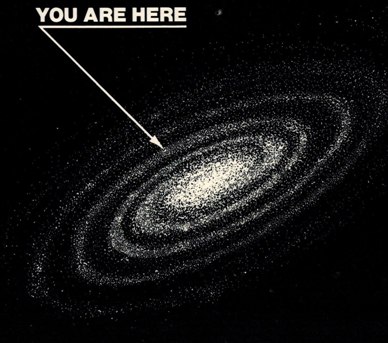
Figure 104. Some Perspective -- Earth in the
Galaxy.
References
Late Heavy Bombardment:
https://en.wikipedia.org/wiki/Late_Heavy_Bombardment
Solar structure and evolution:
https://en.wikipedia.org/wiki/Sun#After_core_hydrogen_exhaustion
Pangaea Formation and Breakup:
https://en.wikipedia.org/wiki/Pangaea
http://eatrio.net/pangea-maps
The Prehistoric Earth series. Thom Holmes. Infobase
Publishing. 2008.
Early Life: The Cambrian Period
The First Vertebrates: Oceans of the Paleozoic Era
March onto Land: The Silurian Period to the Early Triassic Epoch
Dawn of the Dinosaur Age: The Late Triassic & Early Jurassic
Epochs
Time of the Giants: The Middle & Late Jurassic Epochs
Last of the Dinosaurs: The Cretaceous Period
The Rise of Mammals: The Paleocene & Eocene Epochs
The Age of Mammals: The Oligocene & Miocene Epochs
Primates and Human Ancestors: The Pliocene Epoch
Early Humans: The Pleistocene & Holocene Epochs
Feathered Dinosaurs: The Origin of Birds. Thom &
Laurie Holmes. Enslow Publishers, Inc. 2002.
The World without Us. Alan Weisman. Thomas Dunne Books -
St. Martin's Press. 2007.
Plate tectonics and ice ages: MIT paper
http://news.mit.edu/2016/ancient-tectonic-activity-was-trigger-for-ice-ages-0418
Sudden increase in whale sizes: Popular Science article
http://www.popsci.com/baleen-whales-big
Images:
Protoplanetary Disk:
http://www.media.inaf.it/2015/05/06/hl-tau-nasconde-davvero-dei-pianeti
- Atacama Large Millimeter / Sub-millimeter Array (ALMA) October
2014
Orion Nebula:
Close up:
http://spaceref.com/astronomy/the-orion-nebula.html
- NASA Spitzer Science Center 07/23/2013
Full:
http://www.astrocruise.com/milky_way/M42_0712.htm - Philip
Perkins 12/13/2007
Earth from Space: NASA
https://search.yahoo.com/yhs/search?p=earth+images+from+space&ei=UTF-8&hspart=mozilla&hsimp=yhs-001
Continental Drift and Geologic Time Periods:
http://www.ucmp.berkeley.edu/geology/anim1.html
http://earthguide.ucsd.edu/eoc/teachers/t_tectonics/p_plate_reconstruction_blakey.html
Detailed Description: U.C. Berkeley Museum of Paleontology
http://www.handprint.com/PS/GEO/geoevo.html#Carb
Late Heavy Bombardment: Jovanna Goette
http://antediluviana.blogspot.com/2015_02_01_archive.html
Geologic Timeline:
http://upload.wikimedia.org/wikipedia/commons/2/2d/Timeline_Earth_Geological.png
Excavation Right at KT Boundary: The New Yorker 8 April 2019
https://www.NewYorker.com/magazine/2019/04/08/the-day-the-dinosaurs-died
Cambrian Invertebrates:
Origin of Eukaryotic Cells:
https://getpocket.com/explore/item/the-unique-merger-that-made-you-and-ewe-and-yew?utm_source=pocket-newtab
Saccorhytus coronarius: Jian Han, Northwest University, China
http://www.npr.org/sections/thetwo-way/2017/01/30/512040289/scientists-describe-ancient-bag-like-sea-creatures-from-china
Ordovician Invertebrates:
Karen Carr - Indiana State Museum and Historic Sites
http://MuseumVictoria.com.au/MelbourneMuseum/discoverycentre/600-million-years/timeline/ordovician
Jawless Fishes:
Astraspida -- Nobu Tamura
http://paleoexhibit.blogspot.com/2014/04/jawless-armored-fish-from-ordovician_20.html
Arandaspida: -- Wikipedia
https://en.wikipedia.org/wiki/Arandaspida
Meganeuropsis:
http://es.prehistorico.wikia.com/wiki/Meganeuropsis
Lobe Finned Fishes:
Tiktaalik: Rodney Start - Museum Victoria
http://MuseumVictoria.com.au/MelbourneMuseum/discoverycentre/600-million-years/timeline/devonian/tiktaalik
Reptiles:
Dimetrodon:
https://commons.wikimedia.org/wiki/File:Dimetrodon_grandis.jpg
Edaphosaurus: https://en.wikipedia.org/wiki/File:Edaphosaurus_BW.jpg
"Thrinaxodon BW" by Nobu Tamura (http://spinops.blogspot.com)
Own work. Licensed under CC BY 2.5 via Commons
https://commons.wikimedia.org/wiki/File:Thrinaxodon_BW.jpg#/media/File:Thrinaxodon_BW.jpg
Cygnonathus: Nobu Tamura
https://en.wikipedia.org/wiki/Cynognathus#/media/File:Cynognathus_BW.jpg
Hyperodapedon: http://critters.pixel-shack.com/WebImages/crittersgallery/Hyperodapedon.jpg
Dinosaurs:
Late Jurassic Scene: National Geographic
http://science.nationalgeographic.com/wallpaper/science/photos/jurassic-period/jurassic-landscape
Allosaurus: Wikimedia Commons
http://dinosaurs.about.com/od/dinosaurpictures/ig/Allosaurus-Pictures/Allosaurus.-2HG.htm
Compsognathus: Arturo de Miguel
http://www.dinosaurier-info.de/animals/dinosaurs/pages_c/compsognathus.php
Spinosaurus: BBC Nature
http://www.bbc.co.uk/nature/life/Spinosaurus
Tyrannosaurus: Nobu Tamura
https://en.wikipedia.org/wiki/File:Tyrannosaurus_BW.jpg
Struthiomimus:
https://en.wikipedia.org/wiki/File:Struthiomimus_BW.jpg
Deinonychus: Keiji Terakoshi
https://MuseumVictoria.com.au/MelbourneMuseum/DiscoveryCentre/dinosaur-walk/meet-the-skeletons/deinonychus
Pachycephalosaurus: Vlad Korstantinov
http://DinosaurPivoting.boards.net/thread/203/pachycephalosaurus-4-deinonychus
Ichthyosaurus: Nobu Tamura
https://en.wikipedia.org/wiki/Ichthyosaur#/media/File:Ichthyosaurus_BW.jpg
Placodus:
http://www.allposters.com/-sp/A-Placodus-Crushing-Brachiopods-and-Seashells-with-its-Special-Teeth-Posters_i13397757_.htm?stp=true
Plesiosaurus: Dmitry Bogdanov
https://en.wikipedia.org/wiki/File:Plesiosaurus_3DB.jpg
Pliosaurus: Dmitry Bogdanov
https://en.wikipedia.org/wiki/Pliosaurus
Mosasaurus: Dmitry Bogdanov
https://commons.wikimedia.org/wiki/File:Mosasaurus_beaugei1DB.jpg
Mammals:
Early Cenozoic Earth: Washington University
http://www.atmos.washington.edu/1998Q4/211/project2/travis.htm
Uintatherium: Roman Uchytel:
http://prehistoric-fauna.com/Uintatherium
Pakicetus & Ambulocetus & whale evolution chart: University of
California, Berkeley
http://evolution.berkeley.edu/evolibrary/article/evograms_03
Amebelodon: Smithsonian
https://commons.wikimedia.org/wiki/File:Amebelodon.jpg
Hyaenodon: Wikipedia, Royal Ontario Museum, Heinrich Harder
https://en.wikipedia.org/wiki/Hyaenodon
Enaliarctos: Mammal Evolution: An Illustrated Guide. R.J.G.
Savage and M.R. Long. 1986.
http://palaeo.gly.bris.ac.uk/Palaeofiles/Pinnipeds/evolution.html
Megatherium:
http://www.sapere.it/sapere/approfondimenti/animali/dinosauri/megatherium.html
Glyptodon: Heinrich Harder via WikiMedia
http://PrehistoricEarth.wikia.com/wiki/Glyptodon
Humans:
Early human migration to America: Smithsonian Magazine,
12 March 2014
https://www.SmithsonianMag.com/science-nature/ancient-migration-patterns-north-america-are-hidden-languages-spoken-today-180950053
B.C. comic strips by Johnny Hart: 3 May 2019 and 6 May
2019
https://JohnHartStudios.com/bc/2017/05
Abandoned Warehouse:
Photograph by Michael Bleiweiss from Ft. McHenry - 4 June 2017
Docking area for U.S.N.S. Wright
2000 S. Clinton St, Baltimore, MD
Earth Temperature Timeline: XKCD comic strip by Randall Monroe
https://xkcd.com/1732 (2016)